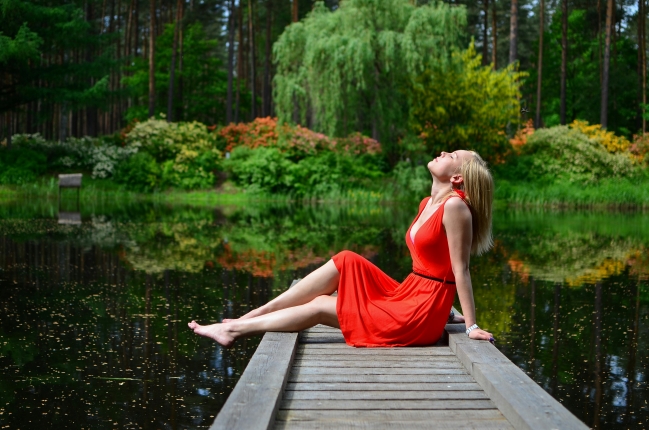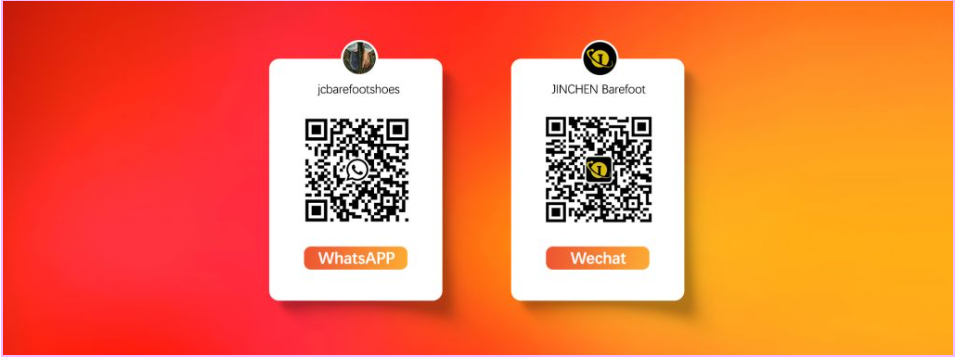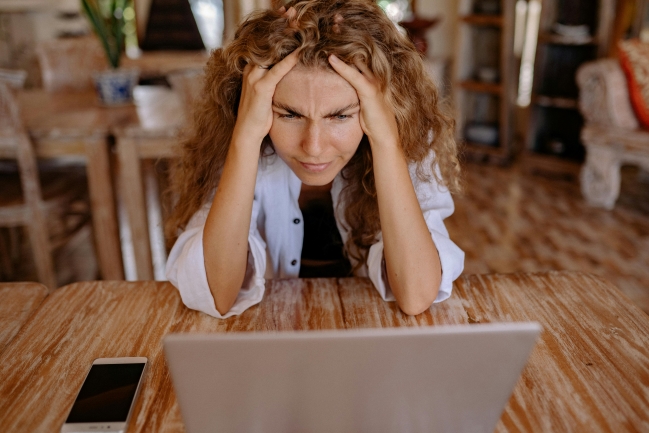In the scorching summer, do you always feel irritable and under great pressure? Perhaps you haven’t noticed that apart from your brain and heart, your feet can also suffer from “heatstroke” – we call it “emotional heatstroke of the feet”. This is not only a physical discomfort but also a hidden outlet for modern people’s psychological stress.
This article will take you on a deep dive into: Why do the feet also bear emotional stress? Why can the barefoot sensation be a natural remedy for regulating physical and mental stress? Also, how do barefoot shoes offer a sustainable and everyday way to relieve stress?
What Is "Emotional Heatstroke of the Feet"?
“Emotional heatstroke of the feet” is not a medical term but a vivid metaphor for a state of disharmony in the interaction between the mind and the body.
In modern life, our feet are constantly wrapped in heavy, non-breathable and ill-fitting shoes for long periods of time, gradually losing the ability to perceive the ground. This precisely cuts off the perceptual feedback pathways between the feet and the nervous system as well as the brain.
From an evolutionary perspective, the soles of the feet contain a large number of nerve endings and were originally important organs for humans to perceive information such as the environment, safety, temperature, and balance. But nowadays, it is “sealed” in shoes and cannot move freely, which leads to the obstruction of neural feedback pathways and subsequently affects the brain’s perception regulation and emotion regulation systems.
Specifically, it is manifested as
After sitting or standing for a long time, there is a stuffy and burning sensation in the soles of the feet.
Wearing shoes for a long time can make one feel tired and irritable instead.
When one’s emotions are unstable, it is more likely to experience cold feet or sweating.
The center of gravity of the feet is disordered, and one walks as if “stepping on cotton”.
These are all typical signs of “emotional heatstroke of the feet” – your feet are calling for help from you.
Barefoot Sensation: Reawaken the Channels of Body Perception
Going barefoot doesn’t just mean not wearing shoes.
The true feeling of going barefoot comes from the high-quality information exchange between the soles of the feet and the brain.
When you walk on the beach, on the grass or on the cobblestone path, the nerves in the soles of your feet receive a variety of tactile signals, which are transmitted to the cerebral cortex and activate the brain regions related to emotions, balance and spatial perception. This multi-level neural stimulation can be effective:
Promote parasympathetic nerve activity and relax the body;
Reduce the level of the stress hormone (cortisol);
Increase heart rate variability (HRV) and enhance emotional resilience;
Stimulate the vestibular system and proprioception, and stabilize body posture and mental state.
More and more studies show that barefoot training or walking on the ground can help regulate anxiety, improve sleep and reduce stress responses.
A study published in the Journal of Environmental and Public Health pointed out that short periods of barefoot grounding can effectively improve the neuroendocrine state and reduce chronic stress indicators.
This also explains why many people feel inexplicably relaxed and at ease when walking barefoot on natural ground – this is an instinctive response from the primitive nervous system.

But in Modern Life, One Can't Go Barefoot All the Time — How Should We Deal with It?
Here comes the problem: Due to religious culture and constraints such as hygiene and safety, we cannot walk barefoot on the grass all day long, nor can we bring the beach into the office.
This is where the value of barefoot shoes lies.
Barefoot shoes simulate the feeling of going barefoot in modern life, activate neural feedback and regulate stress in the following ways:
Ultra-thin sole, retaining ground feedback
Barefoot shoes usually feature extremely thin soles of 3 to 6 millimeters, with additional cushioning layers removed to retain information such as the texture, temperature, and hardness of the ground as much as possible. This can maximize the activation of the sensory system on the soles of the feet and restore the natural operation of the foot-brain pathway.
Zero heel drop, supporting natural body alignment
Traditional heel elevation damages the bone structure, keeping the muscles in a state of tension for a long time, leading to the accumulation of fatigue and pressure. Barefoot shoes keep the feet at the same level as the ground, restore a natural standing posture, reduce joint pressure and lower the baseline of body tension.
Wide toe space to release nerve endings
The front part of the barefoot shoes is designed to be wide, allowing the toes to stretch freely without being restricted or squeezed. This is extremely crucial for releasing peripheral nerves, alleviating anxiety in the feet, and restoring proprioception.
Lightweight and soft, enhancing the freedom of wearing
The entire shoe has a flexible and rollable structure, making it closer to a “barefoot state” when worn. It can be used for simple barefoot walking training at any time, such as short walks in the office, relaxation on the balcony, yoga meditation, etc.
Real Research Cases
✅ Case one: Barefoot walking Experiment in urban Forest (Korean study)
A five-week experiment involving 62 adults, 20 times 90 minutes, comparing the effects of going barefoot with wearing shoes. The results show:



Interpretation: Barefoot walking alters physiological conditions, significantly reduces inflammatory responses, and simultaneously activates neurotransmitters related to emotional stability (such as serotonin), scientifically verifying the feasibility of “feet regulating emotions”.
✅ Case two: Summary of local therapy (Grounding) studies
Multiple studies have shown that at night, when using the ground connection method (direct skin contact with the ground or using a grounding pad) :
📌 significantly reduces nocturnal cortisol levels;
📌 improve sleep quality and prolong deep sleep stage;
📌 increases heart rate variability (HRV) and enhances the regulatory ability of the sympathetic/parasympathetic nerves;
📌 reduces inflammation and pain indicators and alleviates anxiety symptoms
Most of these studies come from the background of Europe and America, covering HRV, physiological hormones and subjective stress scores, and are widely recognized scientific bases for barefoot/ground grafting therapy.
Practical Exercise Guidance Based on Real Cases
| Scenario | Method | Effect |
| ① Barefoot Standing at Home | Stand barefoot on wooden floor or carpet, close your eyes, and feel the texture and temperature of the ground for 5–10 minutes. | Activates foot sole tactile pathways and restores sensory input. |
| ② Light Walking with Barefoot Shoes | Wear barefoot shoes and walk in your neighborhood or park. Focus on the feeling of each step for at least 10 minutes. | Simulates natural barefoot sensation with protection, reduces tension. |
| ③ Foot Scan Meditation (Before Sleep) | Lie down and mentally scan from toes → arches → heels, focusing on warmth or tightness and gradually releasing. | Calms cortisol secretion and improves sleep quality. |
| ④ Cold–Warm Alternating Stimulation | After washing feet, stand barefoot on cold tiles, then move to a warm surface (like a rug). | Rapidly boosts proprioception and circulatory response. |
| ⑤ Indoor “Barefoot Zone” | Create a dedicated area at home with a rug or mat to walk barefoot in a small space daily. | Establishes a consistent daily stress release mechanism. |
Conclusion: Stress Doesn't Just Exist in Your Mind — Your Feet Are Feeling It Too
Going barefoot is not only a return to nature, but also a return to the dialogue mechanism between the body and the brain. Modern people are under multiple pressures from information, emotions and the environment, but they seldom pay attention to “healing starting from the feet”.
When you free your feet and regain the feeling of being barefoot, you not only release the suppressed nerves in your feet but also open up a deeper self-regulation channel for your body and mind.
Why not start with a pair of barefoot shoes to re-establish the synesthetic connection between your feet and your heart? Let every step be lighter, more carefree and more perceptive.
About Us: We are a barefoot shoe manufacturer dedicated to the natural functions of the human body and foot health, committed to bringing “barefoot freedom” into urban life. If you are also looking for a comfortable, natural and scientific way to regulate physical and mental stress, welcome to learn about our series of products or follow us to get more knowledge and practice methods about foot health.




